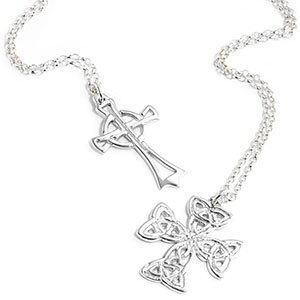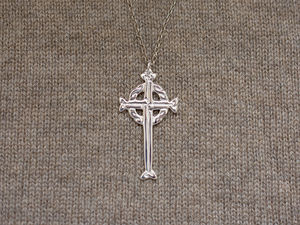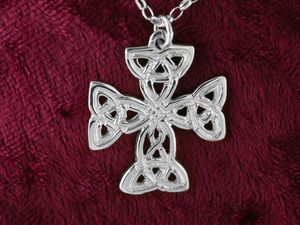High Crosses
The first Christian settlements in Britain were small communities led by hermit monks. Gradually these attracted more and more followers until they became more like monastic villages, comprising residential huts, guest accommodation, craft workshops and a small church or prayer house. This church building was small, dark and low roofed, used for quiet contemplation by the religious leaders. All those in Britain have long since disappeared, having been taken over by the established Roman Catholic and subsequently the Anglican Church. However, some of the original monasteries, now heritage sites, can still be seen in Ireland and on the island of Iona.
The lay followers and visiting public would have been led in worship by the monks, but outside the church building where there was more space. Their focus for worship was a standing stone carved with a cross.
The earliest standing crosses were rough pillar stones carved with a simple cross, but as the settlements increased in size and importance, so did the crosses. From the 8th century onwards carvings became more and more elaborate, often carved on all faces, until eventually the stone itself was sculpted in a regular shape and mounted with a circular cross “head”. These were very tall and are known as “High Crosses”, carved on all sides with intricate knotwork designs and scenes from the Scriptures. They still stand today at many ancient and present-day church sites in Britain and Ireland. In Wales they can be seen at Nevern, Carew, Penally and Llandudoch in Pembrokeshire, or at Margam and Llanilltud in Glamorganshire, as well as many others throughout Wales.
The crosses must have been used as a focus for worship and an illustration of Christian beliefs, much as the wall paintings and screens were used in later Medieval churches, and some experts have speculated that the High Crosses too were originally painted in bright colours. There is little evidence of this now, as the crosses that have survived have been “weathered” for over a thousand years.


